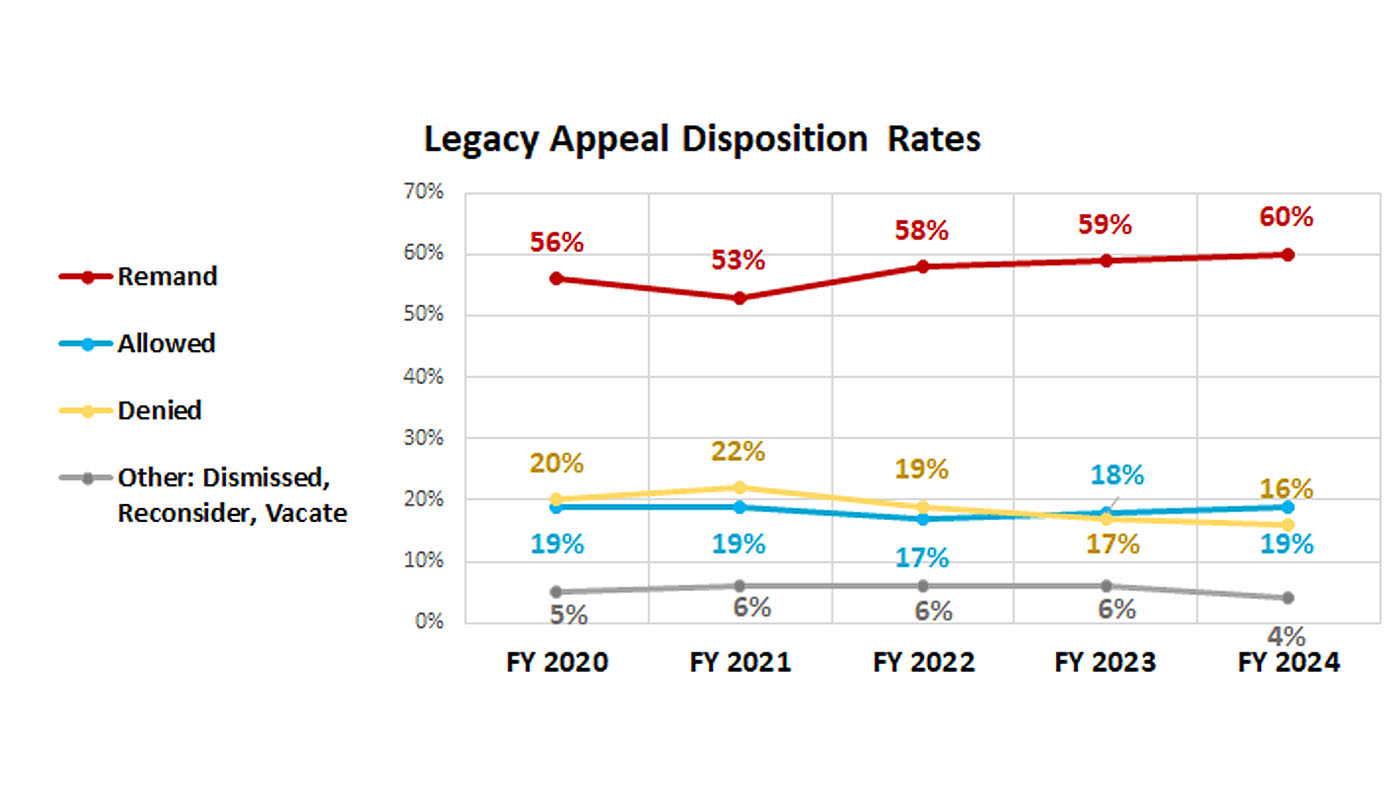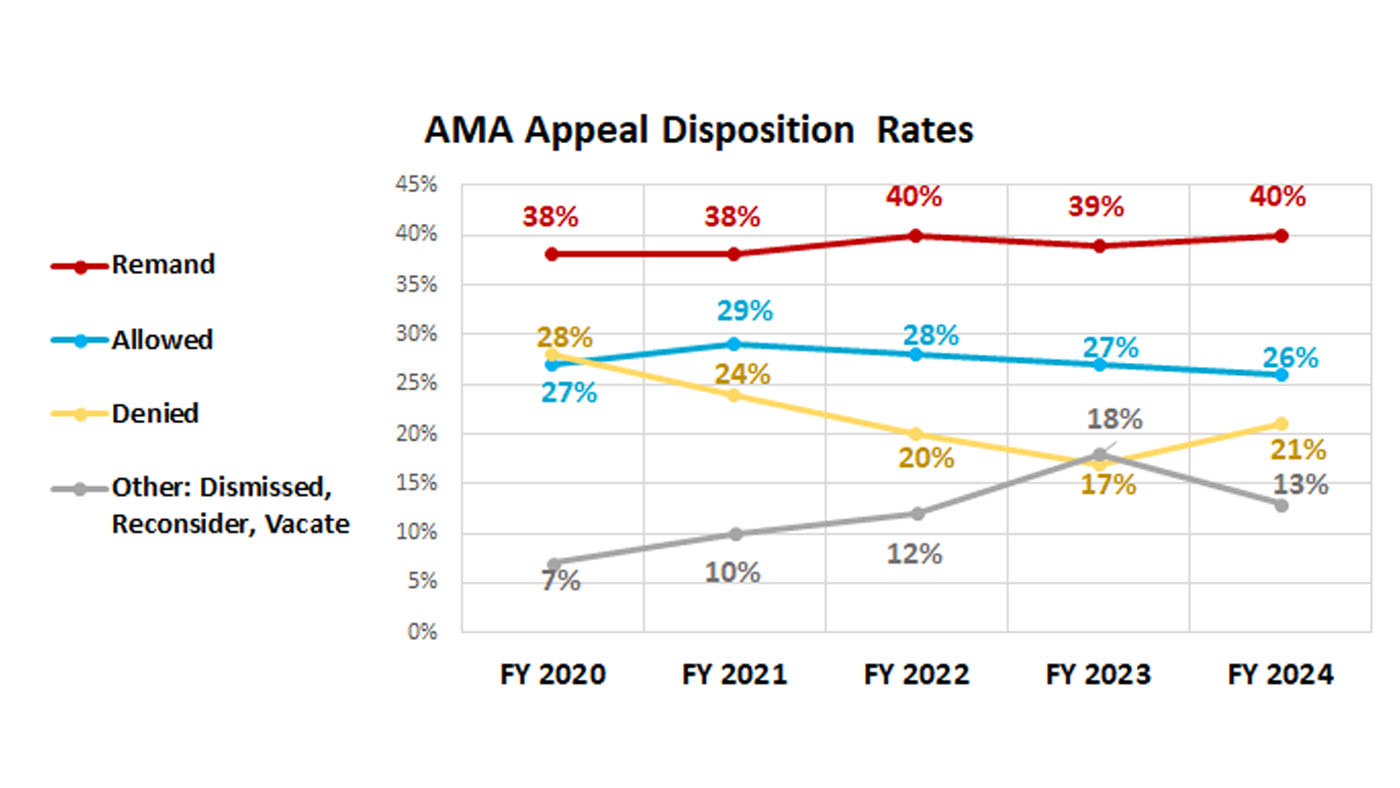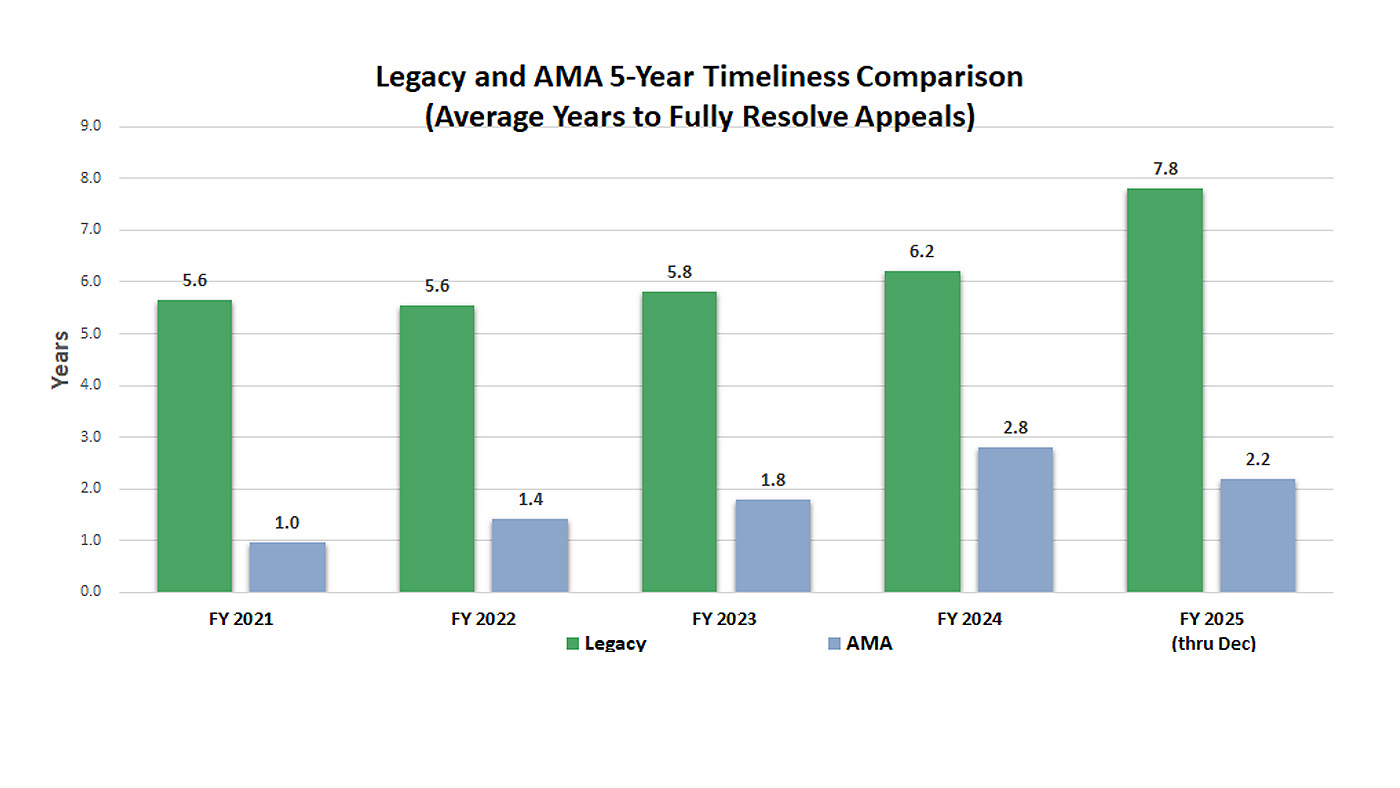Board of Veterans' Appeals
AMA Appeals System Shows Improvements Over the Older Legacy System
The Board continues to closely monitor and analyze resolution rate trends under both the Legacy system and the AMA during the past five years so that stakeholders can better compare the two systems and assess the overall merits and effectiveness of the AMA system when compared to the Legacy system. The graphs below demonstrate that remand rates under the AMA appeals system are consistently about 20% lower than under the Legacy appeals system and that grant rates under the AMA appeals system are consistently about 7-10% higher than under the older Legacy system.

TITLE GOES HERE

TITLE GOES HERE
These increases in granted relief at the Board only tells part of the story. One goal of AMA was to allow Veterans to “appeal first” to the Veterans Benefits Administration (VBA) to have an initial denial reconsidered with or without new evidence before seeking a Board appeal. The much lower appeal rates to the Board under AMA and increasing percentage of Veterans instead seeking the newer and faster review options at VBA (supplemental claims and Higher Level Review) are encouraging evidence that these expanded Veteran choices are providing more timely and effective final resolution for Veterans. For example, even though the overall number of AMA claims is steadily rising at VBA each year, the appeal rate to the Board for AMA cases is steadily dropping. During FY 2021, 17% of Veterans appealed to the Board for relief under AMA and that percentage is now down to 10% during FY 2023 and FY 2024.
The most notable improvement in AMA vs. Legacy is the significant reduction in the time it takes to fully resolve a Veteran’s appeal before the Board. AMA appeals are fully resolved (with no remands) approximately 5 years faster than it takes to fully resolve Legacy appeals (with no remands). Coupled with the allowed and denied data from the charts above, the graph below demonstrates the AMA system delivers a final resolution for Veterans years faster than under the Legacy system appeals.

TITLE GOES HERE
* Excludes decisions with remanded issues. ** Legacy ADC = Average time (years) from filing of appeal (VA Form 9) to Board until final Board decision. *** AMA ADC = Average time (years) from Notice of Disagreement (VA Form 10182) to Board of Veterans' Appeals until final Board decision.
While the Average Days to Complete (ADC) for AMA cases rose significantly during FY 2024, that was only because the Board was adjudicating all those AMA appeals that had waited the longest. Both the Average Days Pending (ADP) and ADC for AMA cases crested and started to drop considerably during the last six months of FY 2024 and AMA resolutions will get exponentially faster in FY 2025 because the Board has already adjudicated all those older AMA appeals. (See “More Board Personnel Address Pending AMA Appeals and Wait Times”)
Below are some links that help explain why the appeal wait times grew and what the Board has been doing to improve.
- Workload Challenges of Two Separate Appeals Systems
- Requirements to Work Cases in Docket Priority Order
- More Board Personnel Address Pending AMA Appeals and Wait Times
- AMA Appeals System Shows Improvements Over Older Legacy System
- Veteran Choices for Type of Board Appeal Influences Wait Times
- Better Decision Quality Leading to Fewer Court Appeals
















